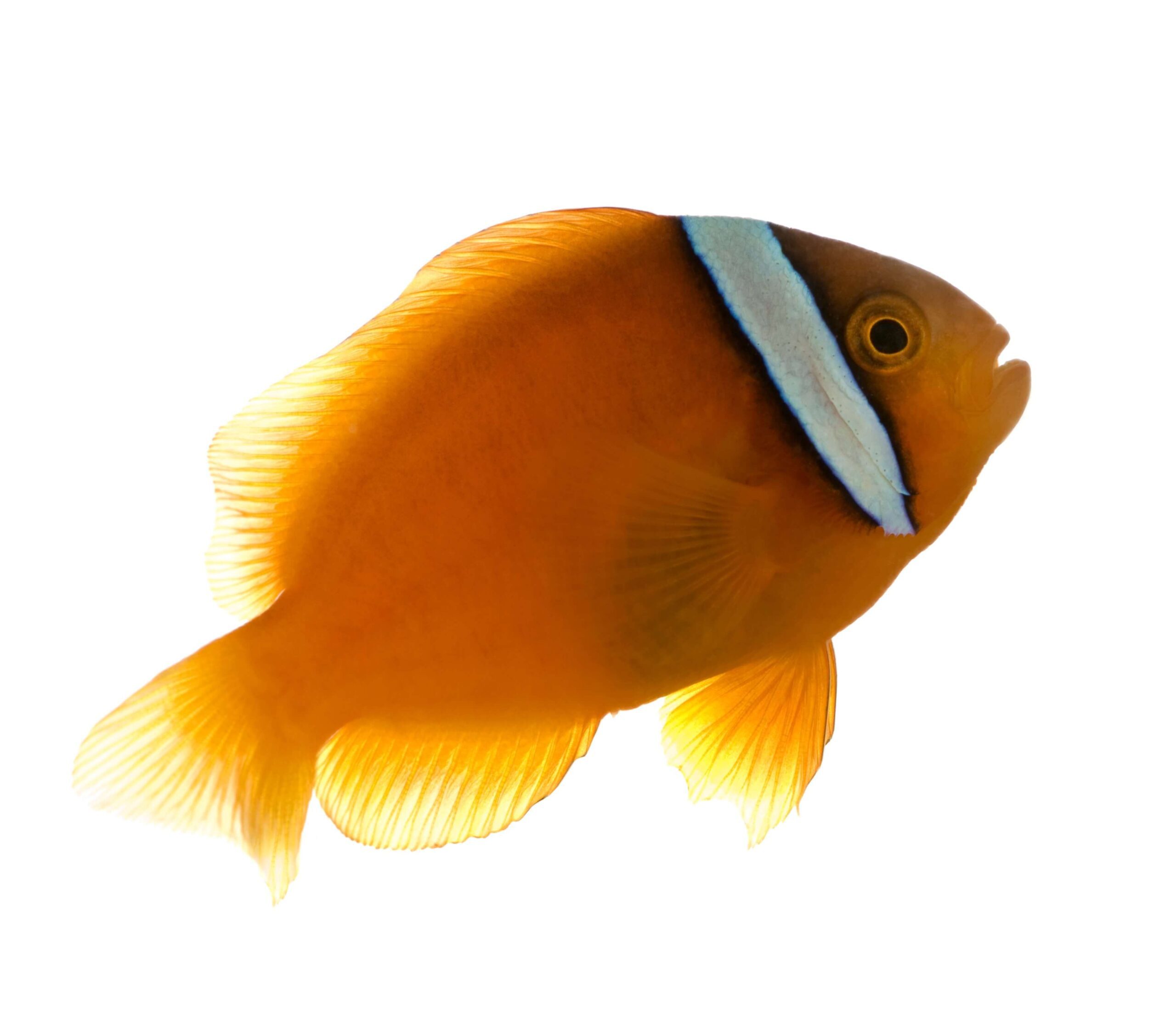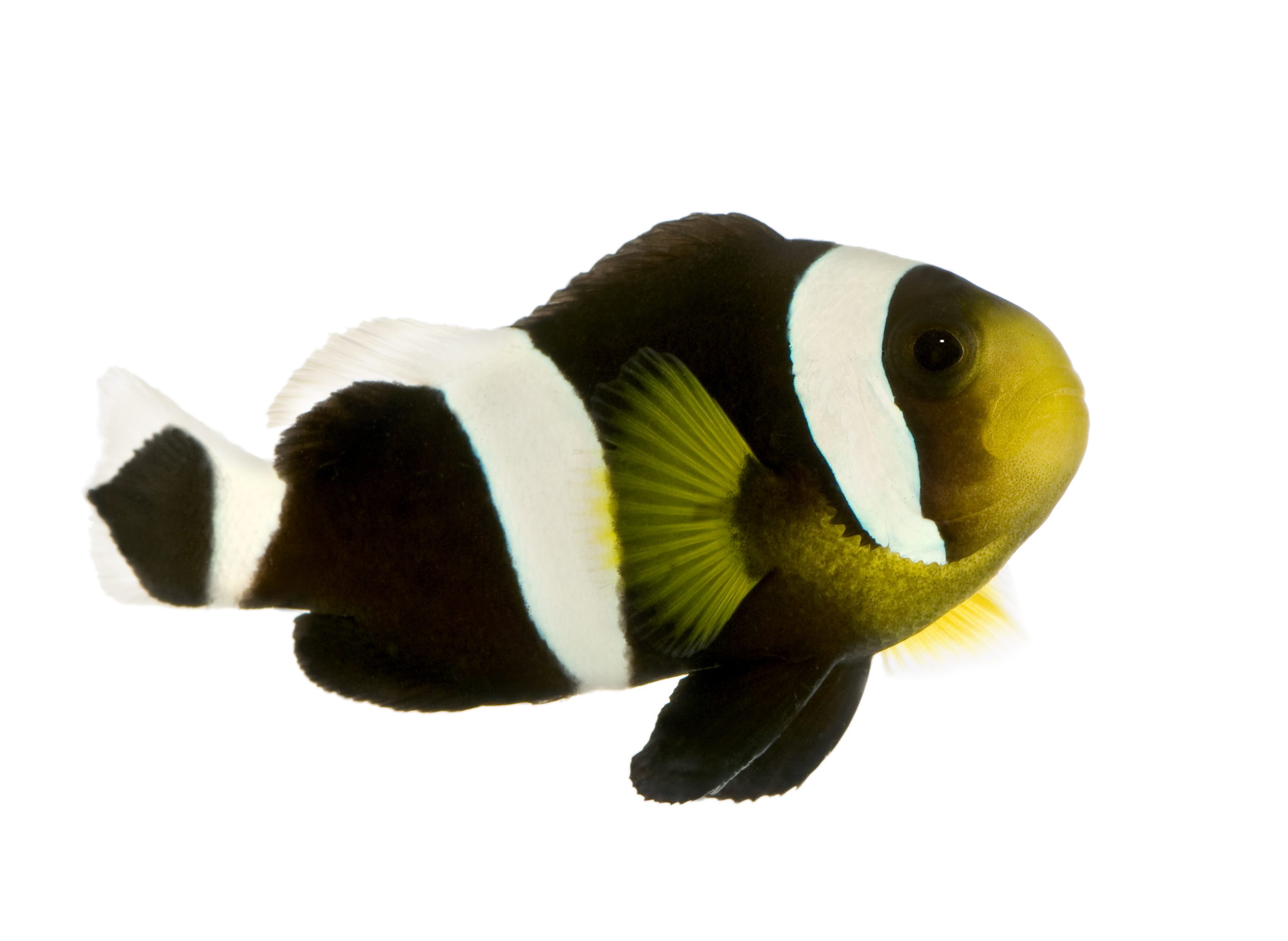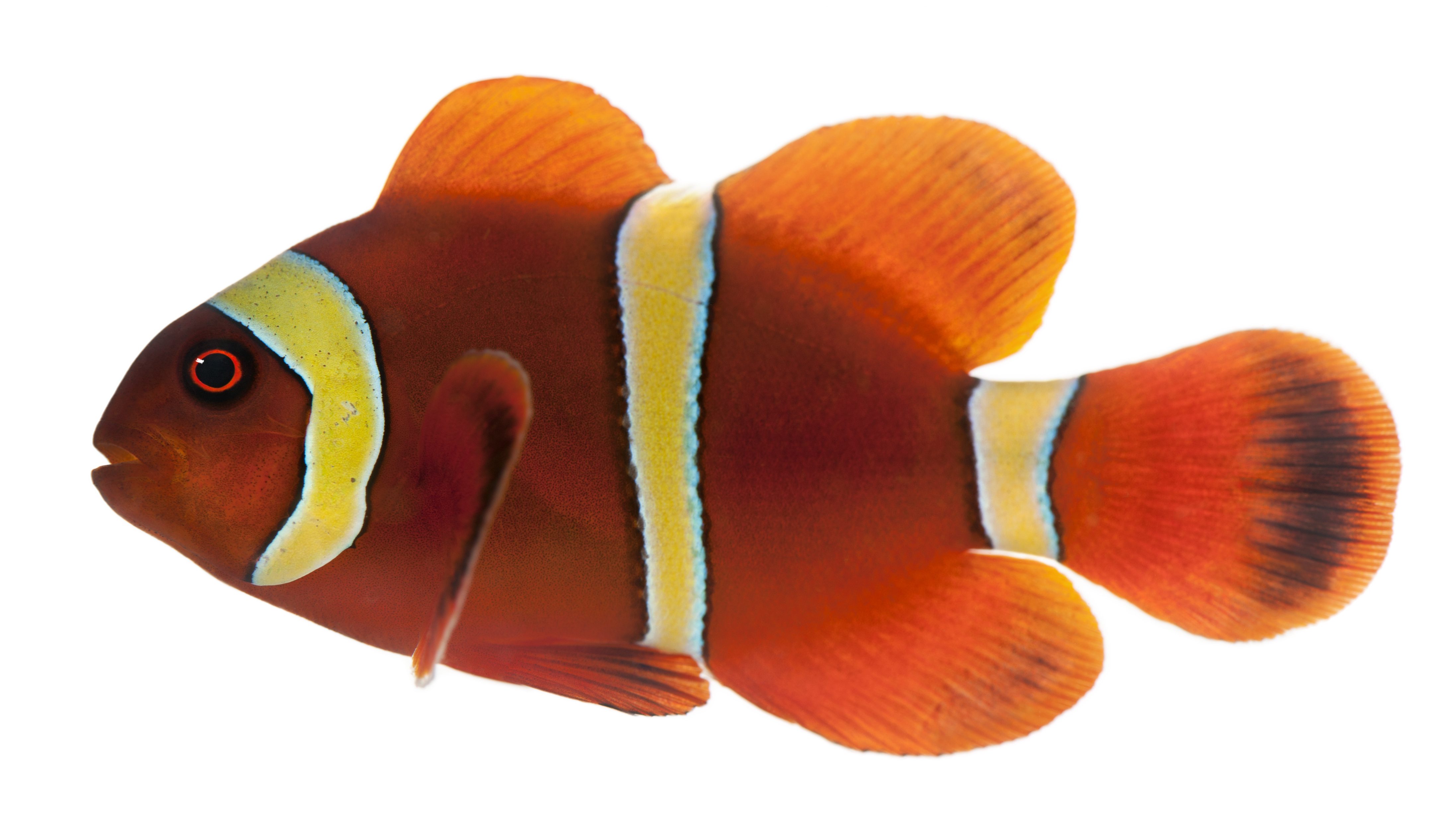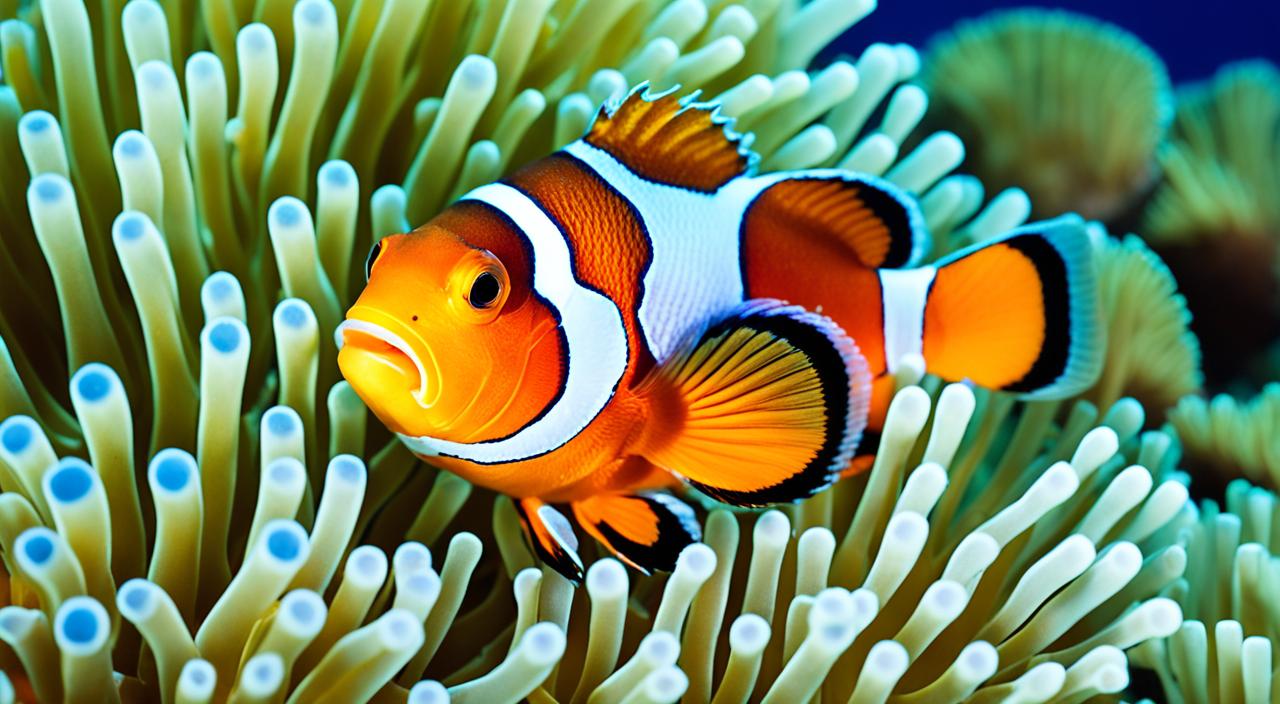As a saltwater aquarium enthusiast, I constantly seek captivating and vibrant marine species to add to my collection. One species that has caught my attention is the Fire Clownfish, scientifically known as Amphiprion ephippium. With its stunning colouration and exciting behaviours, the Fire Clownfish is a perfect choice for any saltwater aquarium.
The Fire Clownfish, commonly found in the Indo-Pacific region’s coral-rich areas and shallow reef flats, is known for its symbiotic relationship with anemones. This beautiful fish forms a close bond with its chosen anemone, seeking protection and shelter within its tentacles.
When it comes to caring for Fire Clownfish, there are a few key considerations. Every aspect is vital to their well-being, from providing the right tank conditions to ensuring compatible tank mates. Let’s delve deeper into the habitat, care requirements, and compatibility of the Fire Clownfish so you can create an optimal environment for these fascinating creatures.
Key Takeaways:
- Fire Clownfish, scientifically known as Amphiprion ephippium, are captivating marine species.
- They are native to the Indo-Pacific region and form a symbiotic relationship with anemones.
- Caring for Fire Clownfish requires replicating their natural habitat in a saltwater aquarium.
- They have specific diet requirements, require appropriate tank conditions, and benefit from disease prevention measures.
- Fire Clownfish are compatible with certain fish and invertebrates, but caution is advised when introducing new tank mates.
Habitat and Origin of the Fire Clownfish
The Fire Clownfish, known as Amphiprion ephippium in scientific terms, is a captivating marine species native to the Indo-Pacific region. It can be found in coral-rich areas and shallow reef flats, creating a vibrant and colourful display in its natural habitat. One notable characteristic of the Fire Clownfish is its association with anemones, forming a symbiotic relationship for protection and survival.
In the wild, Fire Clownfish seek refuge and establish their territories within the waving tentacles of various anemone species. This relationship protects the clownfish from predators, while the anemone benefits from the clownfish’s waste products and food particles.
When replicating the Fire Clownfish’s habitat in a saltwater aquarium, it is essential to provide suitable anemones or alternatives that can serve as a refuge for the clownfish. This contributes to the clownfish’s well-being and allows hobbyists to observe their natural behaviours and interactions.
To create a thriving environment for the Fire Clownfish, it is crucial to maintain proper water conditions, such as appropriate salinity levels and temperature ranges. Additionally, providing a coral-rich setup with ample hiding spaces and establishing a well-balanced ecosystem will contribute to the clownfish’s overall health and happiness.
Anemone Options for Fire Clownfish in Captivity:
| Anemone Species | Habitat Requirement | Difficulty Level |
|---|---|---|
| Bubble Tip Anemone (Entacmaea quadricolor) | Moderate to high lighting and moderate water flow | Intermediate |
| Sebae Anemone (Heteractis crispa) | Moderate to high lighting and moderate water flow | Intermediate |
| Carpet Anemone (Stichodactyla spp.) | High lighting and strong water flow | Advanced |
| Long-Tentacle Anemone (Macrodactyla doreensis) | Low to moderate lighting and gentle water flow | Beginner to intermediate |
Note: The difficulty level indicated here refers to the care and experience required to maintain the specific anemone species successfully. Beginner aquarists may opt for anemone alternatives, such as artificial anemones or other hiding spots that can provide the desired shelter for the Fire Clownfish.
Care Requirements for the Fire Clownfish
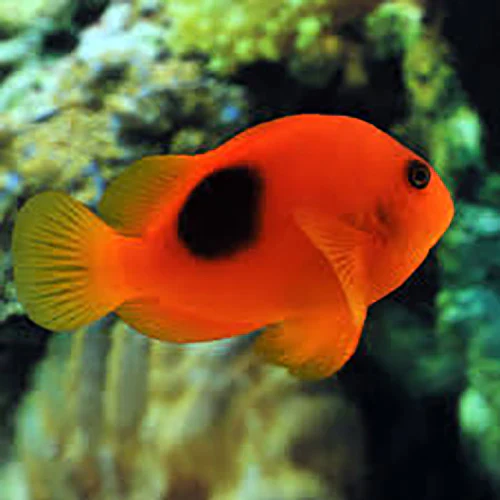
With its peaceful temperament, the Fire Clownfish is an excellent choice for community aquariums. However, it is essential to note that it may display territorial behaviour near its chosen anemone. Specific care requirements must be met to ensure the Fire Clownfish’s well-being.
The Fire Clownfish tank size should be at least 20 gallons, providing ample space for swimming and exploring. Creating hiding spaces using live rock or artificial structures to mimic their natural habitat is crucial.
The Fire Clownfish’s omnivorous diet should include a balanced mix of frozen and live foods. Suitable options include mysis and brine shrimp, marine algae, and algae-based foods. Regular feeding sessions should be established to ensure proper nutrition.
The water conditions in the aquarium should be carefully maintained. The recommended pH levels range from 8.1 to 8.4, and the salinity should be between 1.022 and 1.026. The water temperature should also be maintained between 75°F and 82°F to promote the Fire Clownfish’s overall health.
Disease Prevention:
Preventing diseases in Fire Clownfish requires careful attention to water quality and tank maintenance. Regular water testing and proper filtration systems are essential. Additionally, quarantining new additions before introducing them to the main tank can help prevent the spreading of potential diseases.
By providing suitable tank conditions, a balanced diet, and disease prevention measures, you can ensure the health and well-being of your Fire Clownfish in your saltwater aquarium.
Compatibility of the Fire Clownfish with Other Fish and Invertebrates
The Fire Clownfish is a fascinating marine species that can coexist harmoniously with various tank mates. When selecting companions for your Fire Clownfish, it is essential to consider their compatibility to ensure a peaceful and thriving aquarium environment.
Tank Mates for the Fire Clownfish
The Fire Clownfish is generally reef-safe and can be kept alongside non-aggressive invertebrates and corals. The following species are known to be compatible tank mates for the Fire Clownfish:
- Royal Gramma (Gramma loreto): The Royal Gramma, with its striking purple and yellow colouration, is an excellent choice to pair with the Fire Clownfish. Both species inhabit different areas of the tank, minimizing potential territorial disputes.
- Ocellaris Clownfish (Amphiprion ocellaris): The Ocellaris Clownfish is a close relative of the Fire Clownfish and shares a similar peaceful temperament. These species can coexist peacefully, creating a stunning display of colours in your aquarium.
- Banggai Cardinalfish (Pterapogon kauderni): The Banggai Cardinalfish is known for its graceful appearance and calm nature. It can peacefully cohabitate with the Fire Clownfish, contributing to the overall beauty of your marine aquarium.
While these species are generally compatible with the Fire Clownfish, individual fish personalities may vary. Therefore, it is crucial to introduce new tank mates gradually and monitor their behaviour closely to ensure compatibility.
Compatibility Chart
| Tank Mate | Compatibility |
|---|---|
| Royal Gramma | High |
| Ocellaris Clownfish | High |
| Banggai Cardinalfish | Moderate |
Breeding and Sexual Dimorphism of the Fire Clownfish
Like many other clownfish species, the Fire Clownfish can be successfully bred in captivity. However, aquaculturing Fire Clownfish is relatively less common compared to other clownfish species. Despite this, dedicated hobbyists have achieved great success in breeding these beautiful creatures, contributing to their availability in the aquarium trade.
Fire Clownfish Breeding Process
Dedicating time, effort, and resources to breeding Fire Clownfish can be a rewarding experience for saltwater aquarium enthusiasts. The breeding process usually involves providing the clownfish couple with a suitable environment and ensuring optimal health. Here is a step-by-step guide to breeding Fire Clownfish:

- Set up a separate breeding tank: Create a separate tank specifically for breeding purposes. This tank should be well-maintained and equipped with necessary filtration and lighting systems.
- Select a compatible clownfish pair: Choose a healthy pair of Fire Clownfish with a strong bond. Introducing the pair into the breeding tank when they are still juveniles is recommended.
- Create a conducive breeding environment: Mimic the natural habitat of the Fire Clownfish by incorporating suitable substrate, live rock, and anemone-like ornaments.
- Encourage spawning behaviour: Provide the clownfish pair with a proper diet rich in high-quality marine foods. Feed them multiple times daily to replicate their natural feeding habits and stimulate their spawning behaviour.
- Observe and collect the eggs: Once the female lays the eggs on a chosen substrate or surface, carefully remove the eggs from the tank using a specialized egg collection device.
- Transfer the eggs to an appropriate environment: Move the eggs to a separate rearing tank with controlled water parameters and good water flow. Maintain optimal temperature and salinity levels to ensure successful hatching.
- Nurture the fry: As the eggs hatch, the fry will enter a larval stage. Provide suitable food, such as rotifers or phytoplankton, for their initial feeding stages, gradually transitioning to more extensive food sources as they grow.
- Monitor health and growth: Regularly monitor the fry for signs of illness or stress. Perform routine water changes and maintain proper water quality to ensure their well-being.
- Grow-out and further care: As the fry develops, it will gradually transform into juvenile Fire Clownfish. Continue providing proper nutrition and care to facilitate their growth and development.
Successful breeding and rearing of Fire Clownfish require patience, knowledge, and dedication. Beginners should gain experience in breeding other clownfish species before attempting to breed the Fire Clownfish, given their slightly more challenging aquaculture requirements.
Sexual Dimorphism in Fire Clownfish
Like many other clownfish species, Fire Clownfish exhibit sexual dimorphism, which refers to the physical differences between males and females. Female Fire Clownfish are usually more extensive and dominant than their male counterparts. The dominant fish within a group will typically become female, while the other fish will remain male.
Interestingly, if the dominant female dies or is removed from the group, the most prominent male will undergo a biological transformation and become the new female. This behaviour, known as protandrous hermaphroditism, ensures the continuity of the social structure within the group and allows for the breeding and reproduction of the species.
Understanding the sexual dimorphism of Fire Clownfish is essential for breeding success and establishing a harmonious social dynamic within a captive environment.
| Characteristic | Male Fire Clownfish | Female Fire Clownfish |
|---|---|---|
| Size | Smaller | Larger |
| Dominance | Lower | Higher |
| Similar to females, but less vibrant | Similar to female, but less vibrant | Distinctive and vibrant |
Note: The size, dominance, and colouration differences mentioned above are general trends observed in Fire Clownfish. There may be variations in individual fish within a population.
Coloration and Temperament of the Fire Clownfish
Juvenile Fire Clownfish exhibit stunning colouration that adds vibrancy to any marine aquarium. Their bodies are adorned with bright orange hues and are characterized by distinct black-edged white bands. As they mature, their colouration undergoes a gradual transformation.
Adult Fire Clownfish boast a deep red-orange hue, which is a striking contrast to their juvenile appearance. This remarkable colour change is a fascinating feature of the species, captivating the attention of marine aquarium enthusiasts.
In addition to their captivating colouration, Fire Clownfish are known for their relatively peaceful temperament. However, it’s important to note that they may exhibit territorial behaviour near their chosen anemone, as they form a symbiotic relationship with this organism for protection.
Fire Clownfish Color Transformation
The colour transformation of the Fire Clownfish from their juvenile to adult stage is captivating. The vibrant orange and black-and-white colouration gradually give way to the rich red-orange hue that characterizes adult individuals.
The Fire Clownfish’s Temperament
The Fire Clownfish is generally considered peaceful, making it suitable for community aquariums. However, their territorial behaviour near their chosen anemone should be considered when selecting tank mates. Choosing compatible fish species that can peacefully coexist with the Fire Clownfish is essential.
| Fire Clownfish Coloration | Temperament |
|---|---|
| Juvenile | Peaceful |
| Distinct orange coloration with black-edged white bands | Easily adaptable to community aquariums |
| Adult | Territorial near chosen anemone |
| Deep red-orange hue | Requires careful consideration when selecting tank mates |
Availability and Acquiring Fire Clownfish from Reputable Sources
While Fire Clownfish (Amphiprion ephippium) may not be as commonly aquacultured as some clownfish species, their availability to hobbyists has recently increased. These mesmerizing fish, with their vibrant colouration and captivating behaviours, are highly sought after by marine aquarium enthusiasts.
When acquiring Fire Clownfish for your saltwater aquarium, sourcing them from reputable suppliers is crucial. You ensure that the fish are healthy and sustainably collected or bred by obtaining specimens from trustworthy and ethical sources, such as Saltwaterfish.com.
Reputable sources prioritize the well-being of the fish, adhering to best practices in aquaculture and responsible collection methods. This not only benefits the individual fish you acquire but also contributes to the conservation of the species in the wild.
By obtaining Fire Clownfish from reputable sources, you support the long-term availability of these captivating creatures and promote sustainable practices within the aquarium hobby. These measures are essential for preserving the beauty and diversity of marine ecosystems.
To learn more about Fire Clownfish availability and to find reputable sources, visit Saltwaterfish.com.
<!–
Comparison of Fire Clownfish Availability
| Supplier | Availability | Source |
|---|---|---|
| Supplier A | High | source |
| Supplier B | Medium | source |
| Supplier C | Low | source |
–>
Summary
The Fire Clownfish is a vibrant addition to any saltwater aquarium. This species will surely delight marine aquarium enthusiasts with its stunning colouration and captivating natural behaviours. By following the care tips outlined in this guide, you can ensure the well-being of your Fire Clownfish and create a thriving marine ecosystem.
A suitable habitat is crucial for the Fire Clownfish’s health and happiness. Setting up a well-maintained saltwater aquarium with appropriate hiding spaces and a compatible anemone will allow the clownfish to exhibit its natural behaviours and form a symbiotic relationship.
Proper nutrition is essential for the Fire Clownfish’s well-being. Offer a varied diet, including frozen and live foods, marine algae and algae-based foods. Maintaining optimal water conditions and taking necessary disease prevention measures can keep your Fire Clownfish healthy and thriving.
In conclusion, the Fire Clownfish is a remarkable species that adds vibrancy and charm to marine aquariums. By providing the proper care and attention, you can enjoy the beauty of this unique clownfish and create a thriving aquatic environment.
FAQ
What are the care requirements for Fire Clownfish?
Fire Clownfish require a well-maintained saltwater aquarium with suitable anemones or alternatives. They should be provided with a minimum tank size of 20 gallons, hiding spaces, and a varied diet consisting of frozen and live foods. Additionally, maintaining proper water conditions and disease prevention measures is crucial for their well-being.
Can Fire Clownfish be kept with other fish and invertebrates?
Fire Clownfish are considered reef-safe and can be kept with non-aggressive invertebrates and corals. They are compatible with peaceful species such as the Royal Gramma, Ocellaris Clownfish, and Banggai Cardinalfish. However, introducing new tank mates should be done with caution to ensure compatibility.
How can Fire Clownfish be bred in captivity?
Fire Clownfish can be bred in captivity, although they are less commonly aquacultured compared to some other clownfish species. Female Fire Clownfish are generally larger than males, and the dominant fish in a group will often become the female. If the dominant female dies or is removed, the most prominent male will undergo a sex change and become the new female.
What is the coloration and temperament of Fire Clownfish?
Juvenile Fire Clownfish display vibrant orange coloration with distinct black-edged white bands, which gradually change as they mature into a deep red-orange hue. They are known for their relatively peaceful temperament, although territorial behavior may be exhibited near their chosen anemone.
Where can I acquire Fire Clownfish from reputable sources?
When acquiring Fire Clownfish, it is advisable to seek specimens from reputable sources, such as Saltwaterfish.com, to ensure the health and sustainability of the species.

